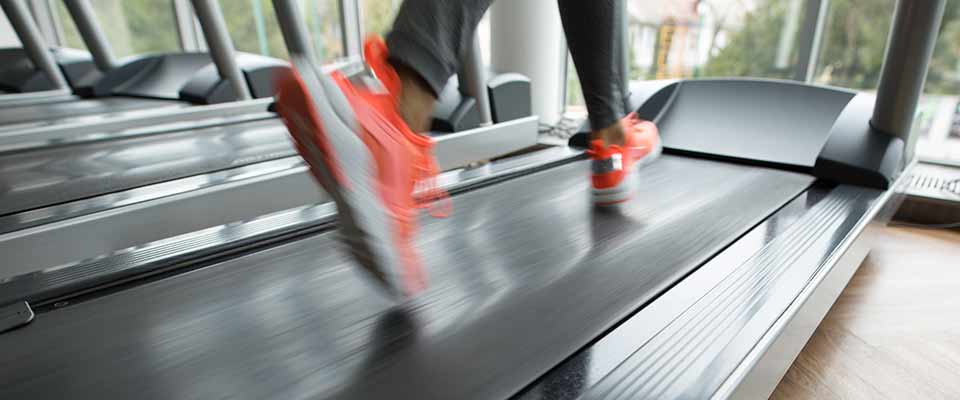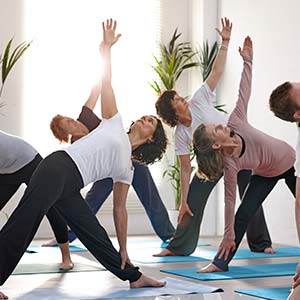Even if you don’t have a regular workout routine, you’ve probably heard of HIIT, or high-intensity interval training. According to a survey by The American College of Sports Medicine, it held steady among the top fitness trends of 2017, along with wearable tech (i.e., activity trackers) and bodyweight training. So what’s this HIIT all about anyway?
A little intensity goes a long way
High-intensity interval training is an exercise conditioning technique in which you alternate all-out, intense bursts of activity — they should feel really uncomfortable — with lower-intensity recovery periods. High intensity, of course, is relative to your fitness level and different for everyone.
So for instance, beginners to this type of workout might do a warm-up, then three minutes of walking followed by 60 seconds of faster walking or light jogging, adding a jumping jack-style motion of your arms to get their heart rate up. Then back to walking.
Elite athletes have long known that when it comes to training, HIIT offers many benefits, including improved cardiovascular health, stamina, and endurance. Here’s how those benefits translate for us regular folks:
HIIT workouts do a lot in a lot less time
HIIT workouts can bring on the health benefits in a shorter amount of time, so you won’t need to spend hours exercising. Want proof? A 2014 research study found that one minute of intense exercise within an otherwise easy 10-minute routine can improve endurance and overall health.
Study participants worked out for 30 minutes per week. That means they busted a gut for just three minutes each day for seven days. Not bad, right?
After six weeks, both the men and women in the study boosted their endurance levels by about 12 percent (that’s a lot!), lowered their blood pressure, and improved muscle activity. The men lowered their blood sugar levels as well.
HIIT workouts burn calories and fat even after you finish your workout
High-intensity training forces the body to work harder to build its oxygen stores back up — for a period of 16 to 24 hours post-workout. The result? More calories burned than if you’d exercised at a lower intensity for the same (or longer) period of time.
HIIT workouts don’t require a gym membership or equipment
HIIT workouts generally use just your own body weight, since the focus is on getting your heart rate up and keeping it there. So you can do it anytime, anywhere: at home, outdoors, even in your hotel room if you travel for business.
HIIT workouts may alter how we age.
Researchers at the Mayo Clinic compared differences in gene expression inside the muscle cells of both younger and older people who’d done different types of workouts.
The biggest differences were seen after both groups (older and younger) had done high-intensity interval training for 12 weeks. In the younger group, almost 275 genes were firing differently. In the older group (age 64+) the change was even more dramatic: more than 400 genes were working differently after 12 weeks of HIIT exercise. Many of those genes are known to be related to the health and aging of cells.
Essentially, intense exercise seemed to change muscle cells in ways that could slow our biological aging.
As the name suggests, high-intensity interval training is… intense. It pushes your body hard. It’s important to allow recovery time between workouts. For best results, a few times per week is all you need!
Note: If you have a pre-existing medical condition, check with your doctor before starting any exercise program.




